The Rise and Fall of the Gulf Coast Tung Oil Industry
advertisement
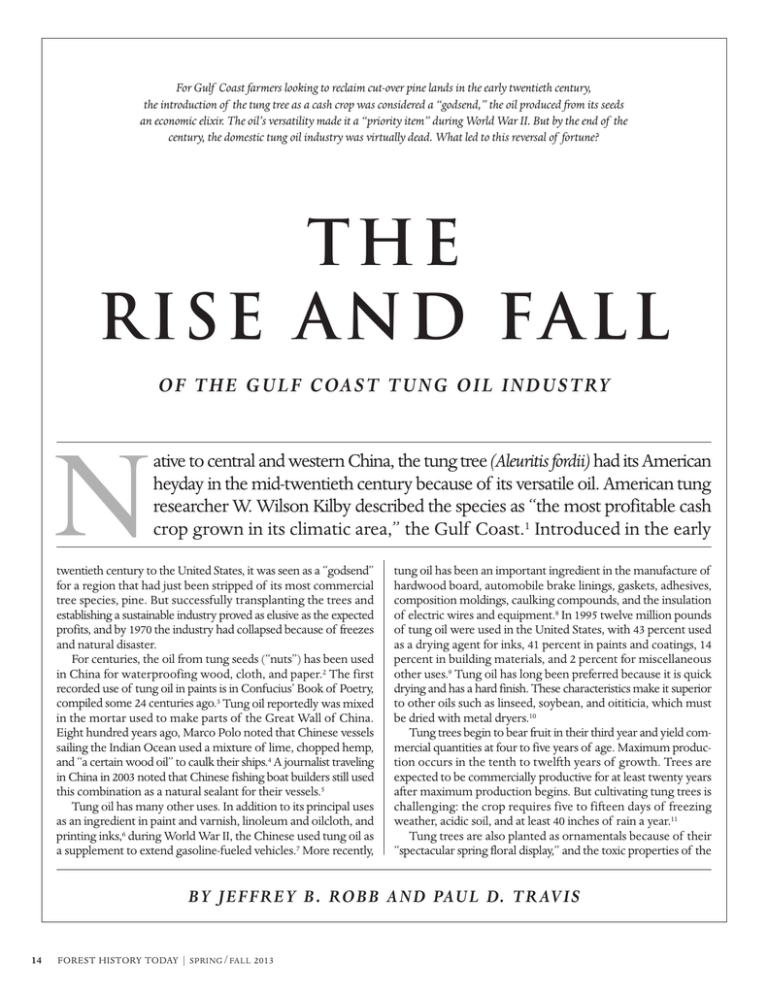
For Gulf Coast farmers looking to reclaim cut-over pine lands in the early twentieth century, the introduction of the tung tree as a cash crop was considered a “godsend,” the oil produced from its seeds an economic elixir. The oil’s versatility made it a “priority item” during World War II. But by the end of the century, the domestic tung oil industry was virtually dead. What led to this reversal of fortune? Th e Rise and Fall OF THE GULF COAST TUNG OIL INDUSTRY N ative to central and western China, the tung tree (Aleuritis fordii) had its American heyday in the mid-twentieth century because of its versatile oil. American tung researcher W. Wilson Kilby described the species as “the most profitable cash crop grown in its climatic area,” the Gulf Coast.1 Introduced in the early twentieth century to the United States, it was seen as a “godsend” for a region that had just been stripped of its most commercial tree species, pine. But successfully transplanting the trees and establishing a sustainable industry proved as elusive as the expected profits, and by 1970 the industry had collapsed because of freezes and natural disaster. For centuries, the oil from tung seeds (“nuts”) has been used in China for waterproofing wood, cloth, and paper.2 The first recorded use of tung oil in paints is in Confucius’ Book of Poetry, compiled some 24 centuries ago.3 Tung oil reportedly was mixed in the mortar used to make parts of the Great Wall of China. Eight hundred years ago, Marco Polo noted that Chinese vessels sailing the Indian Ocean used a mixture of lime, chopped hemp, and “a certain wood oil” to caulk their ships.4 A journalist traveling in China in 2003 noted that Chinese fishing boat builders still used this combination as a natural sealant for their vessels.5 Tung oil has many other uses. In addition to its principal uses as an ingredient in paint and varnish, linoleum and oilcloth, and printing inks,6 during World War II, the Chinese used tung oil as a supplement to extend gasoline-fueled vehicles.7 More recently, tung oil has been an important ingredient in the manufacture of hardwood board, automobile brake linings, gaskets, adhesives, composition moldings, caulking compounds, and the insulation of electric wires and equipment.8 In 1995 twelve million pounds of tung oil were used in the United States, with 43 percent used as a drying agent for inks, 41 percent in paints and coatings, 14 percent in building materials, and 2 percent for miscellaneous other uses.9 Tung oil has long been preferred because it is quick drying and has a hard finish. These characteristics make it superior to other oils such as linseed, soybean, and oititicia, which must be dried with metal dryers.10 Tung trees begin to bear fruit in their third year and yield commercial quantities at four to five years of age. Maximum production occurs in the tenth to twelfth years of growth. Trees are expected to be commercially productive for at least twenty years after maximum production begins. But cultivating tung trees is challenging: the crop requires five to fifteen days of freezing weather, acidic soil, and at least 40 inches of rain a year.11 Tung trees are also planted as ornamentals because of their “spectacular spring floral display,” and the toxic properties of the BY JEFFREY B. ROBB AND PAUL D. TRAVIS 14 FOREST HISTORY TODAY | SPRING / FALL 2013 SUANNE HAYDON TAYLOR, LOUISIANA ECOSYSTEMS AND PLANT IDENTIFICATION, HTTP://WWW.RNR.LSU.EDU/PLANDID/ “From little things, big things grow” goes an old saying. Tung seeds, or “nuts,” which are about one-half inch in length, have been the foundation of an important product for centuries. tree’s foliage, sap, and nuts have led to the issuance of patents for the use of tung tree extracts in controlling termites and boll weevils.12 THE DEMISE OF THE PINE BELT The introduction of the tung tree as a commercial crop coincided with the demise of another one, the longleaf yellow pine (Pinus palustris). Before the Civil War, southern Mississippi was covered by a vast forest, part of a longleaf yellow pine belt that stretched from East Texas to the Florida Panhandle. Giant pines, some more than ninety feet tall, with girths at the base measuring three to four feet, loomed above Mississippi soil, interspersed with occasional stands of loblolly and slash pine.13 John H. Claiborne, an early Mississippi journalist, author, and historian, described the timber in 1841: “For twenty miles at a stretch you may ride through these ancient woods and see them as they have stood for countless years—untouched by the hand of man and only scratched by the lightning flying tempest.”14 These forests were eventually touched by the destructive “hand of man,” initially for the naval stores industry and then for timber; they were depleted in Mississippi by the 1930s. Just as the logging of longleaf yellow pine was reaching its peak, agronomist Eugene B. Ferris established Mississippi’s first agricultural experiment station at McNeill, Pearl River County, in 1902. His duties included assessing the nearby forest, which he described as having “the finest bodies of virgin longleaf pine timber the world has ever seen… The trees [grew] more than one hundred feet tall, frequently with no limbs for a length of fifty to seventy-five feet.”15 In the 1980s, Henry “Botz” Whitney, a longtime southern Mississippi logger with vast experience cutting yellow pine, reminisced: “It was beautiful timber. Oh, I’m telling you, it was beautiful. [But] it’ll never be back anymore, mister.”16 Whitney lamented the loss of the virgin stands, but those who had invested in vast acreages of pine lands and who had led clearcutting operations in southern Mississippi, including partners Lamont Rowlands and Lucius O. Crosby, had already begun casting about for new ways to make the land productive. The two had purchased the Rosa Lumber Company in 1917, and Crosby, a native of Mississippi, settled in Picayune to run the sawmill operation. They also teamed with Miles Goodyear that same year to form the Goodyear Yellow Pine Company and constructed a second mill a mile away with a capacity of 300,000 feet a day—three times that of the Rosa Lumber mill. Crosby’s son later asserted that his father “had no intention of letting the headlong stripping of the forests of South Mississippi make a ghost town of Picayune” and sought expert help. Crosby and Rowlands reasoned that perhaps tung trees, along with diversified agricultural crops, such as satsuma oranges, could provide the alternative they sought.17 During the Great Depression, Lucius O. Crosby Sr. employed a workforce in Crosby, Mississippi, where, according to L. O. Robbins, he “built the biggest broom handle plant in the world. We averaged a good million [broom handles] a month for several years”18 in the 1930s. By then the planting of citrus groves on barren former pine FOREST HISTORY TODAY | SPRING / FALL 2013 15 Lamont Rowlands After cutting out the commercialgrade longleaf pine in Mississippi, business partners Lucius O. Crosby and Lamont Rowlands decided to diversify the region’s agro-industrial base first with satsuma oranges and then tung oil. Giant longleaf yellow pines, some more than ninety feet tall, with girths at the base measuring three to four feet, rose from Mississippi soil and provided naval stores and timber for logs and pulp until the 1930s, when loggers had depleted the commercial stands. lands in southern Mississippi and along the Gulf Coast was already underway. According to the New York Times in 1915, “The orange is the Satsuma. Already it has redeemed land that everybody thought was going to waste, and multiplied its value; and yet, as it were, its work has only begun.” Agricultural experts had fanned out along the coast in Mississippi and Alabama and located a “suitable belt” of land where more than 10 million satsuma orange trees could be cultivated. These groves were planted in a “big area…that was regarded as practically worthless…pine land that had been cut over…bought for $5 an acre.”19 The satsuma mandarin (Citrus unshiu Marc.) variety probably originated in China hundreds of years ago but was first reported 16 FOREST HISTORY TODAY | SPRING / FALL 2013 in Japan more than 700 years ago. In the 1870s the U.S. minister to Japan, General Van Valkenberg, sent some of the first seedlings to America. His wife is credited with naming the citrus after Satsuma, Japan, the region from where they are believed to have originated. In the 1880s satsumas were introduced in Texas and Louisiana and within a decade were extensively planted in all southern Louisiana parishes.20 In Alabama, the satsuma crop covered more than 18,000 acres in Baldwin and Mobile counties, and producers shipped 700 train car loads each season to Chicago, Boston, and New York markets. In the Florida panhandle, Panhandle and Jackson counties billed themselves as the “Satsuma Capital of the World,” and more than 35,000 people attended festivals in 1928 COURTESY OF CENTER FOR THE STUDY OF SOUTHERN CULTURE, UNIVERSITY OF MISSISSIPPI FOREST HISTORY SOCIETY PHOTOGRAPHIC COLLECTION, FHS3411 Lucius O. Crosby The Portuguese first shipped tung oil to Europe in the thirteenth century, but the first shipment to the United States was not until 1869. Skepticism about the oil’s effectiveness as an ingredient in varnishes delayed its importation in large quantities into the United States from China until the early 1900s.23 As imports from China increased, efforts to establish tung as an American commodity began, led by government officials. Between 1905 and 1907 David Fairchild, the head of the Department of Agriculture’s Section of Foreign Seed and Plant Introduction, and L. S. Wilcox, general counsel to China, distributed tung trees to growers in the United States.24 In 1912 the Bureau of Plant Industry, in a special bulletin approved by Secretary of Agriculture James Wilson, urged growers to establish tung orchards, and offered them a small number of year-old trees for free. In 1913 the first tung oil was processed in the United States by the Paint Manufacturers Association in New Jersey.25 Because of special growing condition requirements, the Gulf Coast became the home of an emerging tung oil industry by the late 1920s.26 Wilson Kilby described the introduction of tung as a “godsend” for Gulf Coast The pine belt (top) stretched from Texas into the Carolinas, but the unique growing conditions of farmers looking for a replacement cash the tung tree limited where it could be planted, shown in the shaded area (bottom). crop for large acreages of cut-over pine.27 Chinese exports of tung oil to the United States surged in the DuPont, Devoe and Raynolds, Pratt and Lambert, and Benjamin 1920s as construction in America boomed. Oil was purified in Moore.30 ATO planted the first commercial orchards in Florida in Hankow, barged to Shanghai, and shipped in tankers to Seattle, the 1920s, and by 1930 some 8,000 acres of orchards were being the biggest port of entry.28 Increasing Chinese exports and a desire cultivated in Florida, Louisiana, and Mississippi, with smaller plantto diversify the local economic base spurred efforts to establish ings in Alabama, Georgia, and Texas.31 tung plantations in Pearl River County between Poplarville and Lamont Rowlands planted 9,000 acres of cut-over pine lands Picayune on cut-over timberland.29 The American Tung Oil (ATO) in tung in 1925. He flew in his private aircraft throughout the Gulf Association was formed by a group of paint and varnish makers Coast as “an apostle of tung,” convincing nonbelievers that tung in 1924. Led by Harry Wiggin Bennett, who had seen tung trees orchards and the oil they produced would be the salvation of the in China, its 32 members included Sherwin-Williams, Valspar, region’s economy.32 Charles Goodyear II of the Great Southern FOREST HISTORY TODAY | SPRING / FALL 2013 FROM GEOGRAPHICAL REVIEW, VOL. VII (JAN.–JUNE 1919), 82 THE TUNG INDUSTRY EXPANDS FROM ECONOMIC GEOGRAPHY, VOL. 16, NO. 3 (JULY 1940), 267 and 1929. One city in Florida named itself Satsuma.21 But occasional freezes wreaked havoc on satsuma groves. Unpredictable weather conditions, along with the “sour orange scab” fungus, eventually reduced satsuma citrus to a crop of minor importance. What had appeared as an agricultural panacea thus proved over the years to be largely an economic pipe dream.22 Once again, local businessmen sought another way to build an industrial base. 17 COURTESY OF PATRICIA D. MCCLENDON, HTTP://FREEPAGES.GENEALOGY.ROOTSWEB.ANCESTRY.COM/~MCCLENDON/BOGALUSA/BOGALUSA STORY/ Charles Goodyear II’s Money Hill Plantation had tung orchards “in every direction as far as the eye could see,” as well as cattle and longleaf pine plantations. Today, most of the original 12,500 acres are part of a golf course and residential community and the site of longleaf pine reforestation efforts. Lumber Company hedged his bets during the Great Depression when he established the Money Hill Tung Plantation in St. Tammany Parish. On the 12,500-acre site, he planted tung orchards “in every direction as far as the eye could see” and formed Bogalusa Tung Oil in 1935 to process and sell tung oil.33 In addition, Goodyear continued reforestation efforts to restore longleaf pine and began cattle operations. In all, more than 500,000 tung trees were planted. Partly in response to the endeavor, the U.S. Department of Agriculture established a Tung Research Bureau in Bogalusa.34 The initial cultivation of tung trees occurred in southern Mississippi in 1925, and about a decade later the merits of raising crops of tung nuts were extolled in the Picayune newspaper.35 International events would increase interest in the U.S. tung oil industry. In 1931 Japan invaded Manchuria, which by year’s end was completely controlled by the Japanese. Japan also attacked the major Chinese tung port, Shanghai, in 1932.36 Business observers immediately recognized the threat to American industry if specialty materials such as tung oil could no longer be exported from China.37 In July 1937 Japan expanded the war with China into the central provinces.38 In 1938 the Reconstruction Finance Corporation negotiated a $25 million loan to the Universal Trading Company of New York, owned by Chinese stockholders. The deal, brokered by Shanghai banker K. P. Chen, allowed Chinese interests to purchase American agricultural and manufactured products, including hun18 FOREST HISTORY TODAY | SPRING / FALL 2013 dreds of trucks, gasoline, and food, to be paid back largely with Chinese tung oil vital to the U.S. paint and printing industries.39 During these developments more attention was focused on establishing the American tung oil industry. Because a relatively small number of scattered operators in the Gulf South were supplying only one-fifth of American tung oil needs, in 1939 Congress appropriated $140,000 for the Bureau of Plant Industry and the Bureau of Chemistry to conduct tung research. This effort was designed “to stabilize an infant industry.” Four regional research labs were to be built at a cost of $4 million, and a long-term tung research program was launched.40 David Fairchild, who had shipped tung seeds to the United States in the early 1900s, sent a telegram to ATO President J. C. Adderly, congratulating him on the “remarkable growth” of the tung oil industry, but also urging continued investigation into the merits of tung production.41 Extensive research was begun in 1938 at field labs in Gainesville, Florida; Cairo, Georgia; Fairhope, Alabama (which later moved to Mobile); and Bogalusa, Louisiana (the main U.S. research lab).42 Alachua County, Florida, home to Gainesville, claimed 90 percent of U.S. tung oil production in the 1930s. Community pride was such that the city of Gainesville commemorated the first tung oil shipped from there, and a “tung oil parade” was held on the University of Florida campus celebrating that shipment.43 At the fifth annual ATO meeting in 1939, speakers warned potential tung orchard investors that the “new industry is not a COURTESY OF PATRICIA D. MCCLENDON, HTTP://FREEPAGES.GENEALOGY.ROOTSWEB.ANCESTRY.COM/~MCCLENDON/BOGALUSA/BOGALUSA STORY/ Charles Goodyear II, who was instrumental in establishing the tung oil industry in Louisiana, stands behind Beatrice Core, the Tung Blossom Queen of Louisiana of 1946, and her court. The women are all daughters of local farmers, a reflection of the importance of agriculture to the region. game for men and women of limited capital, that it is highly dangerous for amateurs to follow.” They also lamented that the “tung oil boom” had raised the price of poor cut-over pine lands, worth $7 an acre, to “exorbitant prices” for “city folk” from Chicago, St. Louis, Kansas City, New York, and Cincinnati.44 The importance of the tung oil industry to the Gulf Coast economy in the 1930s was captured in a mural painted in 1939 for the Covington, Louisiana, post office. “Tung Oil Industry,” painted by Xavier Gonzalez and funded by the Treasury Department, depicts the use of cut-over timber land for the planting of tung orchards and emphasizes the role of African American workers in the labor-intensive growing and harvesting of the tung nuts.45 THE WORLD WAR II ERA Despite the expansion of the American tung oil industry, in 1938 the United States was still heavily reliant on imports of tung oil from China, which accounted for 99 percent of American tung imports and was worth more than $20 million. The situation became more critical when frost destroyed about three-quarters of the American tung crop in 1939. Japanese attacks on China exacerbated the crisis: “The cutting off of Shanghai, normally the chief tung-oil outlet, was a blow to the industry; the blockade of the South China coast was a catastrophe.”46 By 1940 K. P. Chen’s Chinese-owned Universal Trading Company was ahead of schedule in repaying more than $2 million of the $25 million U.S. loan, largely with shipments of tung oil.47 The oil had to be smuggled out of ports such as Foochow, which was recaptured by the Chinese in 1941.48 After the Japanese attack on Pearl Harbor in December 1941 brought the United States into the war, business observers noted the obvious probability that consumption of goods made from materials such as tung oil, normally imported from Asia, might be “drastically curtailed.”49 By 1942 Chen’s corporation had repaid its loan by exporting to the United States 150 million pounds of tung oil, which was carried down the Burma Road after the eastern China ports were lost. In March 1942, however, Rangoon was captured by the Japanese, leaving the United States “to fend for tung itself.”50 In April 1942, Time magazine estimated U.S. consumption of tung oil at well over 100 million pounds per year and stated that the oil had no substitutes for its many uses in paints, varnishes, waterproofing, inks, electrical insulation, brakeboards, linoleum, and coating citrus fruit cans. Because of its importance, the oil was deliverable only as a priority item, and essentially all production went to the military. In 1942, 200,000 of the 750,000 acres suitable for tung production in the South were being cultivated. The entire output of domestic tung oil production went to the Army and Navy for war support, such as the coating of ammunition and the painting of ships, and tung oil processors in the United States, including those at Franklinton, Bogalusa, and Covington in southeastern Louisiana, were called on to expand FOREST HISTORY TODAY | SPRING / FALL 2013 19 production.51 In China great profits could be realized from smuggling tung oil and other commodities such as tin and tungsten; Chinese and Japanese officers in remote sectors of the country were said to collude to “share fabulous profits.”52 Because of the dearth of tung oil, substitutes such as castor oil were explored. Secretary of Agriculture Claude Wickard announced in his 1942 report to Congress the initiation of a Texas program to plant castor beans in 11 Texas counties. According to Wickard, this was “strictly a defense measure made advisable by the possibility of a lack of shipping to bring in our normal requirements of tung oil from China and castor beans from Brazil and India.”53 Overall, the emerging American tung oil industry initially benefited from government promotion during the war, but it ultimately would be set back by the promotion of substitutes.54 POSTWAR TO 1969 In the 1950s, as a result of the U.S. embargo on imports from China, domestic requirements for tung oil were met partially by importing 30 million pounds from South America, mostly from Argentina and to a lesser extent from Paraguay.55 Sometimes American policy was contradictory. At one point the United States imposed a stiff import quota on tung oil after funding a program to teach Paraguayans how to grow the crop for the U.S. market.56 Foreign imports and a postwar glut of tung oil depressed the market.57 Nevertheless, several southern communities remained strongly identified with the tung industry. Picayune, Mississippi, for example, billed itself as the “Tung Capital of the World,” with more than 100,000 acres in the county devoted to tung orchards.58 In Bogalusa, Louisiana, in an effort to promote the tung oil industry, Bogalusa Tung Oil sponsored the Tung Blossom Queen of Louisiana contest for a few years following the war. Each spring, a young woman would be recognized in “royal ceremonies, which took place on a raised platform, surrounded by blooming tung trees where once had been a pine forest.” The contest foreshadowed the industry’s fate, lasting only a few years.59 In Florida, Jefferson County was the center of production. Homer Formsby began his finishing business in Monticello, Florida, and tung processing mills in the area included the Jumpy Run mill at the southeastern edge of Monticello, Tungston at Capps, General Tung at Lamont, and Len Tung in Tallahassee. Other centers of tung production were around Gainesville and Mariana, Florida; Bogalusa, Louisiana; and Poplarville, Mississippi.60 Mills bought up to 400 tons of nuts a day and provided thousands of jobs during the full harvest.61 It was during this period that tung research also expanded. George F. Potter was given the “Outstanding Research in Tung” award in 1953 by the American Pomological Society, as well as the ATO “Man of the Year” award for 1956. W. Wilson Kilby, in charge of the Experimental Tung Field of the Mississippi Branch Experiment Station beginning in 1946, “devoted nearly an entire lifetime” to tung research and was recognized as the ATO “Man of the Year” in 1965.62 From the early 1950s to 1969, however, domestic tung oil consumption steadily declined, from 72.4 million pounds in 1950–51 to 32 million pounds in 1968–69.63 Factors responsible for the decline included increased competition from synthetic products, lower prices for natural oils generally, and severe freeze damage in four years between 1965 and 1970.64 By 1969 only two U.S. Department of Agriculture labs (at Monticello and Poplarville) were still conducting productive research in tung.65 20 FOREST HISTORY TODAY | SPRING / FALL 2013 HURRICANE CAMILLE AND ITS AFTERMATH In August 1969 Hurricane Camille slammed into the Gulf Coast. A Category 5 storm—the strongest to directly strike the United States in the twentieth century—its winds were clocked at 200 miles per hour before it destroyed the meteorological instruments tracking its course up the Pearl River in Mississippi. It was responsible for 258 deaths and an estimated $1.42 billion (in 1969 dollars) in destruction, with $950 million of the damage occurring in Mississippi and $350 million in Louisiana. The storm destroyed 35,000 to 40,000 acres of tung trees.66 One storm survivor later recalled that Camille leveled every tree in Lumberton, Mississippi.67 Camille delivered the coup de grâce to an industry already in crisis from rising labor costs, large government stocks of old crop oil, greatly reduced grower net income from tung, and increasing South American competition. In Jefferson County, Florida, tung producer Fred Laukea said that after Camille, “We tried to truck our nuts to Bogalusa for a year or two, but [it] was a lost cause. Price support of [only] 22 cents per pound left us no margin.”68 The era of industrial plantations was over. In the aftermath of Camille, the federal government paid farmers to clear and burn the ruined tung orchards and plant rye grass for pastures to raise cattle. This remained a primary economic activity in the former tung orchards through the mid-1990s, when other activities, including hobby farms, homebuilding, and strawberry and blueberry farming, became more prevalent. In some areas pines have been planted once again.69 Even satsuma oranges have been making a limited comeback. Researchers at the Gulf Coast Research and Extension Center in Fairhope, Alabama, believe that experimental freeze protection systems might create a niche industry for the state’s satsuma growers, who cannot compete with the Florida and Texas growers raising traditional navel oranges and other citrus crops.70 With the help of a $50,000 grant to Auburn University from the U.S. Department of Agriculture, efforts are underway to reestablish the satsuma industry in southern Alabama. Bob Ebel, an assistant professor of horticulture at Auburn, predicted in 2005 that satsumas might be commercially available in supermarkets by 2010, declaring, “If I was a farmer in the southern half of the state, I would seriously consider planting several acres of Satsumas.”71 THE AMERICAN TUNG OIL INDUSTRY TODAY In 1970, despite the devastation of Hurricane Camille, W. Wilson Kilby predicted that the tung industry might rise again if additional research could increase production and expand uses for the oil.72 In the early 1990s Blake Hanson, the owner of a New York-based company, Industrial Oil Products, purchased the Tung Ridge Ranch in Stone County, Mississippi, and began to process tung nuts at his Christmas Money Mill, near the Stone–Pearl River county line. According to him, remnant tung trees in the area generated 65 tons of nuts for the mill.73 In the mid-1990s tung oil began to be produced in the United States for the first time since 1973. This was due in part to the 1996 Farm Act, which eased restrictions on what crops farmers could plant.74 But in 2005, Hurricane Katrina dealt the final blow to the struggling industry. Katrina devastated a large orchard near Lumberton, Mississippi, the source of 15 to 20 percent of the domestic supply of tung oil. Despite arguments that foreign tung markets were declining and that mechanized harvesting and reduced shipping costs could revive domestic tung production in states like Mississippi, today tung oil is produced primarily in China, Argentina, and Paraguay, and most U.S. imports come from South America.75 Given the “weak agronomic attributes” of the tung tree, with its highly specialized growing requirements and its susceptibility to storms, it seems unlikely that the American industry will return to the glory days of the mid-twentieth century. Today there are only about 5,000 acres of tung trees in the southern United States.76 Modern research focuses more on laboratory generation of the key ingredient in tung oil, eleostearic acid, to get the benefits of tung oil without the difficulties of growing the tung tree. The hope is that one day genetically engineered oilseed crops will make this acid a biofuel for vehicles and other machinery and help shift the petroleum-based oil economy to a sustainable, biological one.77 The Gulf Coast tung oil industry may be mostly gone, but it should not be forgotten. It helped diversify an agricultural economy based heavily on cotton and revive local communities suffering from the end of the pine logging period. Planting in the cut-over pine lands slowed soil erosion and contributed to a regional paint and varnish industry.78 Local events like Picayune’s springtime Tung Blossom 5K Walk and One-Mile Fun Run preserve the memory of a time when the Gulf Coast, especially Pearl River County, Mississippi, was the “Tung Oil Center of the World.”79 Synthetic tung oil and other substitutes are available, but Marlyn Holder, a long-time Clinton, Mississippi, handyman and painter, today still yearns for real tung oil in its natural form: “I’m a [house] painter. I found out that I can’t even buy tung oil in gallon containers [any more] but only in quarts and the cost would be great.”80 Of the tung tree plantations themselves, Holder echoes the lament of “Botz” Whitney about the loss of stands of longleaf yellow pine: “It’ll never be back anymore, mister.” Jeffrey B. Robb earned a master’s degree in library and information sciences from the University of North Texas, and a JD from the University of Texas School of Law. He is a professor of government (legal studies) at Texas Woman’s University, where he teaches courses in environmental history, culture, and law. Paul D. Travis holds a PhD from the University of Oklahoma. A professor of history at Texas Woman’s University, he teaches nineteenth- and early-twentieth-century U.S. history courses; his research interests include environmental history. NOTES 1. W. Wilson Kilby, “The American Tung Nut Industry,” Agricultural Science Review VIII (Fourth Quarter) 1970: 34. 2. Courtney Carter et al., “Tung Oil: A Revival,” Review of Agricultural Economics, Vol. 20, No. 2 (Autumn/Winter 1998): 667. 3. Kilby, “American Tung Nut Industry,” 30. 4. Karen Brown and William Keeler, “The History of Tung Oil,” Wildland Weeds (Winter 2005), 6, http://plants.ifas.ufl.edu/misc/pdfs/Tung_ Oil_Brown_Keeler-WW-W05.pdf, accessed August 27, 2013; Marco Polo, The Travels of Marco Polo, Book Third, Chapter I: “Of the Merchant Ships of Manzi That Sail upon the Indian Seas,” http: //www.shsu.edu/ ~his_ncp/Polo.html, accessed January 7, 2008. 5. Peter Hessler, “Letter from China: Underwater,” The New Yorker, June 7, 2003, http:www.newyorker.com/printables/fact/030707fa_fact. 6. George Potter and Harley Crane, Tung Production, U.S. Department of Agriculture Farmers’ Bulletin 2031 (Washington: U.S. Government Printing Office, Rev., 1957), 2. 7. “Non-Wood Forest Products from Temperate Broad-Leaved Trees,” Chapter 7, Food and Agriculture Organization of the United Nations, http://www.fao.org.DOCREP/005/Y4367E/y4351eOb.htm, accessed August 8, 2007. 8. Kilby, “American Tung Nut Industry,” 30. 9. Carter, “Tung Oil: A Revival,” 668. 10. Linda Young, “Tung Nuts Could Bring $20 Million to Stone County,” Mississippi Business Journal, December 21, 1992. 11. “Tung Oil Wanted,” Time, April 6, 1942. 12. K. R. Langdon, “The Tung Oil Tree, Aleurites fordii,” Nematology (Botany) Circular, No. 45, Nov. 1978, Florida Dept. of Agriculture and Consumer Services, Division of Plant Industry. See also Rachel A. Hutchins, “Tung Tree Extracts Useful for Controlling Termites,” U.S. Patent 6264956, issued July 24, 2001. 13. Longleaf yellow pine is one of four types of pines that were often referred to as southern yellow pine. The others are loblolly, shortleaf, and slash pines. But it was the virgin forests of longleaf yellow pine that captured the imagination of lumbermen and subsequently offered them a plethora of economic opportunities. 14. John F. H. Claiborne, “A Trip through the Piney Woods,” in Publications of the Mississippi Historical Society, Vol. IX, ed. Franklin L. Riley (Oxford: Mississippi Historical Society, 1906), 523. 15. Eugene B. Ferris Papers, “Notes on Southern Mississippi,” Department of Archives and History, Jackson, Mississippi. 16. Henry “Botz” Whitney, interview by Paul D. Travis, Nicholson, Mississippi, summer 1980. 17. L. O. Crosby, Jr., Crosby: A Story of Men and Trees (New York: Newcomen Society in North America, 1960), 14–15, 19. Goodyear Yellow Pine Company later became the Crosby Forest Products Company, the name change reflecting in part the push into nontimber products like tung oil. 18. L. O. Robbins, interview by Paul D. Travis, summer 1980. 19. “Turn from Cotton to Orange Growing: Alabama Planters Find Fruit from Japan Thrives on Old Forest Tract,” New York Times, April 18, 1915, accessed October 31, 2013, http://proxy.lib.duke.edu/login?url=http://search.proquest.com/advanced?url=http://search.proquest.com/docview/97703083? accountid=10598. 20. W. T. Block, “Early River Boats of Southwest Louisiana,” http://www. wtblock.com/wtblockjr/sailboats.htm, accessed January 9, 2008; Simon Citrus Farm L.L.C., “History of Louisiana Satsuma Oranges,” http://www. satsumafarm.com/history.htm, accessed January 9, 2008. 21. Katie Smith, “As a Cash Crop,” Southeast Farm Press, January 17, 2001, http://southeastfarmpress.com/cash-crop, accessed January 9, 2008; Chuck Woods, “Florida Panhandle Farming, Growing Satusuma Oranges as Alternative Crop,” Southeast Farm Press, April 6, 2005, http://southeastfarmpress.com/florida-panhandle-farmer-growing-satsuma-oranges-alternative-crop, accessed January 9, 2008; City of Satsuma, Alabama, “About Satsuma,” http://www.cityofsatsuma.com/AboutSatsuma.html, accessed January 9, 2008. 22. For a brief history of expectations for satsuma orange cultivation, see “Turn from Cotton to Orange Growing: Alabama Planters Find Fruit from Japan Thrives on Old Forest Tract,” New York Times (April 18, 1915); in addition, see University of Florida, Institute of Food and Agricultural Sciences, http://edis.ifas.ufl.edu/CH116. 23. Kilby, “American Tung Nut Industry,” 30. 24. Potter and Crane, Tung Production; “Plant Hunter,” Time, October 17, 1938, http://www.time.com/time/magazine/article/0,9171,848340,00.html. Fairchild was responsible for the introduction to the United States of more than 20,000 plants with potential economic importance, such as avocados, mangoes, bamboos, and the flowering cherries that bloom in Washington, DC. The Everglades National Park and the Fairchild Tropical Botanic Garden in Miami are among his legacies. “Everglades Biographies: David Grandison Fairchild,” Everglades Digital Library, http://everglades.fiu. edu/reclaim/ bios/fairchild.htm. 25. M. Ogden Phillips, “Tung Oil: Florida’s Infant Industry,” Economic Geography, Vol. 5, No. 4 (Oct. 1929), 351. 26. Kilby, “American Tung Nut Industry,” 30. 27. Ibid., 34. 28. “Florida’s Tung,” Time, June 6, 1932, http://www.time.com/time/printout/0,8816,789328,00.html. 29. Eddie M. Bigelow and Susan D. Chamberlain, “Pearl River County, Mississippi Hazard Mitigation and Flood Protection Program,” FENA, Mississippi Environmental Management Agency, accessed August 9, 2007. FOREST HISTORY TODAY | SPRING / FALL 2013 21 30. “Florida’s Tung.” 31. Kilby, “American Tung Nut Industry,” 30–31. 32. See Napier, Lower Pearl River Piney Woods, 145. 33. Charles W. Goodyear, II, Bogalusa Story (Buffalo, New York: Wm. J. Keller, Inc., 1950), 193. 34. Ibid., 187–89. 35. Kilby, “American Tung Nut Industry,” 29. 36. Jonathan D. Spence, The Search for Modern China (New York: W. W. Norton & Co., 1990), 391–92. 37. “War Talk,” Time, February 8, 1932, http://www.time.com/time/magazine/article/0,9171,74312,00.html. 38. Spence, Search for Modern China, 391–92. 39. “$25 Million Credits Allowed China by U.S.,” Dallas Morning News, December 16, 1938. 40. “Tung Oil Study by State, U.S. Experts Asked,” Dallas Morning News, March 29, 1939. 41. Ibid. 42. Kilby, “American Tung Nut Industry,” 31. 43. “Tung Oil Parade,” Alachua County Library District Heritage Collection, 2002, http:heritage.acld.lib.fl.us/1101-1150/1134.html, accessed January 15, 2008. 44. “Tung Oil Study.” 45. “New Deal/WPA Art in Louisiana,” http://www.wpamurals.com/ louisian.html; Smithsonian American Art Museum, “Tung Oil Industry,” Study for Covington, Louisiana Post Office Mural, 1939, Xavier Gonzalez: http://ids.si.edu/ids/dynamic?container.fullpage&id=http://americanart.si .edu/images/1962/1962.8.30_1a.jpg, accessed August 6, 2013. See also http://www.myneworleans.com/New-Orleans-Magazine/October2009/THE-FEDS-rsquo-BRUSH-WITH-ART/, accessed August 6, 2013. 46. Joy Hume, “War Hitting American Tung-Oil Interests,” Far Eastern Survey, Vol. 8, No. 12 (June 12, 1939): 142–43. 47. “Everyday Life,” Time, March 18, 1940. Chen, educated at the University of Pennsylvania, was described as “work[ing] 24 hours a day at the unglamorous business of cementing U.S.-Chinese trade relations,” and as “consider[ing] Chinese repayment of U.S. loans his personal responsibility.” 48. “Foochow Recaptured,” Time, September 15, 1941, http://www.time.com/ time/printout/0,8816,766045,00.html. 49. “War Needs May Trim Trade Mart,” Dallas Morning News, December 21, 1941. 50. “Tung Oil Wanted,” Time, April 6, 1942. 51. “Impetus of War,” Dallas Morning News, January 19, 1942; Otis A. Rosborough, Jr., “Compass Lake and Tung Oil,” Jackson County, Florida, July 29, 2000, http://www.rootsweb.com/~fljackso/CompassTung.html, accessed January 9, 2008. 52. “Objective: Limited,” Time, December 20, 1943, http://www.time.com/ time/printout/0,8816,932633,00.html. 53. L. T. Easley, “Texas Farmers to Help Bridge Gap in Vital Raw Materials,” Dallas Morning News, February 21, 1942. 54. Kilby, “American Tung Nut Industry,” 30. 55. Potter and Crane, Tung Production, 2. 56. “Trade with the Communists,” Time, June 1, 1953, http://www.time.com/ time/magazine/printout/0,8816,859940,00.html. 57. “The Heavy Overhang,” Time, November 7, 1955, http:www.time.com/ time/printout/0,8816,807913,00.html. 58. “History of Picayune,” Picayune Chamber of Commerce, http:// www.picayunechamber.org/history_picayune.html. 59. Goodyear, Bogalusa Story, 194. The paper industry still sponsors a Paper Queen pageant. 60. “Tung,” in “Welcome to Jefferson County, Florida: History,” Jefferson County Board of County Commissioners, Jefferson County Planning Dept., and Jefferson County Extension Service, July 10, 2007, http://www. co.jefferson.fl.us/history. 61. Young, “Tung Nuts Could Bring $20 Million to Stone County.” 22 FOREST HISTORY TODAY | SPRING / FALL 2013 62. Kilby, “American Tung Nut Industry,” 29. 63. Jimmy L. Matthews and Abner W. Womack, “An Economic Appraisal of the U.S. Tung Oil Economy,” Southern Journal of Agricultural Economics, December 1970, 161. 64. Ibid. 65. W. Wilson Kilby, “History and Literature of the Domestic Tung Industry,” Mississippi State University Technical Bulletin 56 (August 1969), 2. 66. “Hurricane Camille: August 5–22, 1969,” U.S. Dept. of Commerce, ESSA’s Climatological Data, National Summary, Vol. 20, No. 8, 1969, http://members. tripod.com~littlerosie/camille.html; Roger A. Pielke Jr. et al., “Hurricane Camille Project Report—Thirty Years after Hurricane Camille: Lessons Learned, Lessons Lost,” July 12, 1999, http://sciencepolicy.colorado.edu/ about_us/mmet_us/rogerpielke/camille/report.html; Napier, Piney Woods, 191. 67. Marlyn Holder, interview by Marilyn D. Holder Murphy Travis, summer 2007. 68. “Tung,” in “Welcome to Jefferson County: History”; Holder, interview. 69. “Historic Tour of Henleyfield,” Henleyfield Community, Inc., http://henleyfield.com/tour.htm; George McNeill, “Wal-Mart Deal Opens Markets for Blueberry Growers,” Mississippi Business Journal, July 2004. Blueberries were described as “one of the fastest growing crops” and the town of Collins as a “major center for packing and distribution of blueberries.” Ibid.; L. O. Robbins, interview by Paul D. Travis, summer 1980. Belton Watts, interview by Paul D. Travis, summer 1980, stated that L. O. Crosby put some former mill hands to work picking strawberries; Watts’s wife was in charge of instructing workers to properly pack the berries in crates. See also interviews conducted by Paul D. Travis in Napier, Lower Pearl River’s Pineywoods, 155, 132, and 147. 70. “Mighty A-Peeling! Satsuma Oranges Making a Comeback for Growers and Consumers,” Alabama Agricultural Experiment Station News Release– 2000, www.ag.auburn.edu.aaes/webpress/2000/satsumas.htm. 71. “Senator Sessions Announces $50,000 Grant for Satsuma Orange Research at Auburn University,” Press Release, U.S. Senator Jeff Sessions (R-Alabama), September 19, 2001; Darryal Ray, “Satsumas by the Ton: Citrus Experiment Still Bearing Fruit,” Neighbors–Alabama Farmers Federation, December 30, 2005. 72. Kilby, “American Tung Nut Industry,” 35. 73. Young, “Tung Nuts Could Bring $20 Million to Stone County.” 74. Lawrence Glaser, “Industrial Uses of Agricultural Materials Situation and Outlook Report,” Outlook Report No. (IUS-6), October 1996, http://www. ers.usda.gov/Publications/IUS6/. 75. Carter, “Tung Oil: A Revival,” 670. 76. “Tung Twister: Powerful Enzymes from Tung Trees Could Turn Plants into Oil-Producing Marvels,” U.S. Department of Agriculture, Agricultural Research Magazine, August 2007, http://www.ars.usda.gov/is/AR/ archive/au,07/tung0807.htm?pf=1; “Tung Nuts May Help Engineer Petro Plants,” August 2, 2007, U.S. Department of Agriculture, http://www.statpubl.com/open/268711.phtml, accessed January 9, 2008. 77. Jay M. Shockey, Preetinder K. Dhanoa, Tammy Dupuy, Dorselyn C. Chapital, Robert T. Mullen, and John M. Dyer, “Cloning, Functional Analysis, and Subcellular Localization of Two Isoforms of NADH: Cytochrome b5 Reductase from Developing Seeds of Tung,” Plant Science 169 (2005): 375–85; “Tung Nuts May Help Engineer Petro Plants,” supra note 73. See also Robert Farago, “China Builds Tung Oil Biodiesel Plants,” July 15, 2008, http://www.thetruthaboutcars.com/2008/07/china-buildstung-tree-oil-biodiesel-plants/, accessed August 18, 2013; and Paul Rauber, “Solving the Climate Puzzle: One Piece at a Time,” http://www.sierraclub.org/sierra/200911/climate.aspx, accessed August 18, 2013. 78. “Non-Wood Forest Products from Temperate Broad-Leaved Trees,” Food and Agricultural Organization of the United Nations, supra note 7. 79. “Tung Blossom 5K Walk and One Mile Fun Run,” Picayune Main Street, Inc., http://www.picayunemainstreet.com/5k.htm. 80. Marilyn Holder, interview.
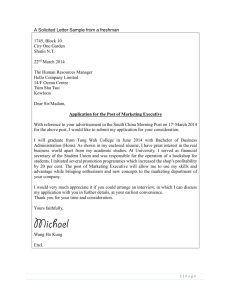
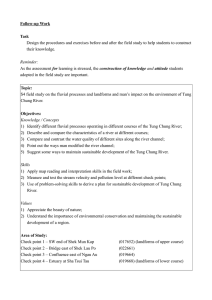
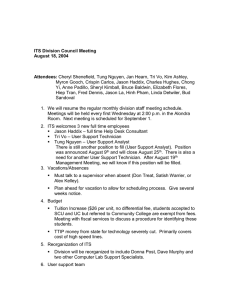
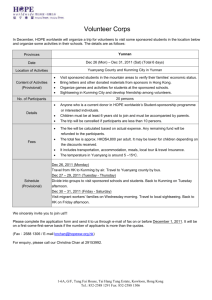
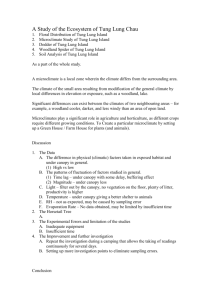
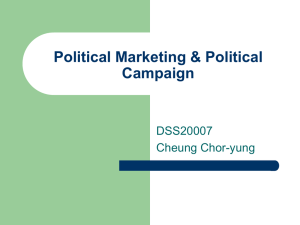
![[ ] Mr CHAN Yau-chi](http://s2.studylib.net/store/data/015368498_1-b9e68e5243f38e41fb633daa2ada46fd-300x300.png)
![Ka-Kit Tung [], Dept. of Applied Mathematics, University of Washington, Seattle](http://s2.studylib.net/store/data/013086452_1-31792848fbed113d64636fabab789840-300x300.png)